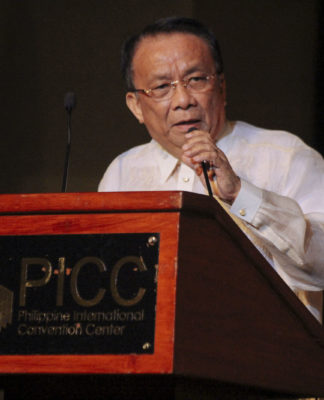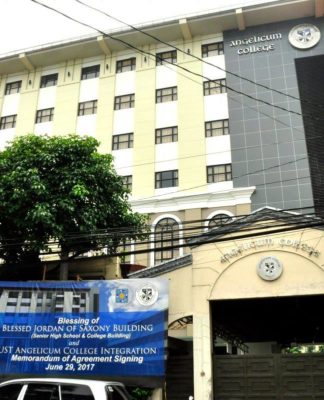IN LINE with a vision to become a “premier international university,” UST has increased its linkages, with a total 115 partnerships covering 25 countries so far.
Office of International Relations and Programs Director Lilian Sison said international linkages improve the quality of education in UST and its international ranking. Linkages and networks provide opportunities for exchanges among faculty members and students for internship, practicum, research visits and study-abroad programs, she added.
“If you have partner universities, you can provide opportunities for students for internationalization, as well as other areas of collaboration like scientific activities, faculty exchange and even research collaborations,” Sison said in an interview.
A document obtained by the Varsitarian showed a 127-percent increase in the number of bilateral agreements with international higher educational institutions and research units since 2013.
In Academic Year (AY) 2012-2013, 45 memoranda of understanding (MOUs) were signed; followed by 65 in AY 2013-2014; 93 in AY 2014-2015 and 115 MOUs this year. Eighteen more MOUs are in the works, the document read.
Sison said 70 percent of UST’s linkages were active, contributing to the University’s visibility in the international scene.
“We are trying to push for activating the rest or probably replacing them (MOUs) with more active ones. The nice thing is that many of the foreign universities who come to us request for partnerships,” Sison said. “We have empowered the deans and their coordinators to look at universities which they think can mutually benefit from a partnership.”
Sison added that UST’s internationalization would help prepare students for the global workplace.
“When you say internationalization, you go beyond the geographical boundaries of the country because now it’s cross-boarder learning. You get immersed in other cultures and it increases your cultural quotient. You get exposed to other cultures, people and countries,” she added.
From 2012 to 2015, the number of outbound students or Thomasians who were involved in internship, research training and study-abroad programs totaled 230, which was a 318-percent increase from 55 during AY 2012-2013. The number of inbound or foreign students who were involved in English language, cultural immersion, research and service learning programs reached 241, or a 174-percent increase from 88 in AY 2012-2013.
Sison emphasized the need to intensify internationalization by offering degree programs by distance education or learning through off-campus sites “so that we can increase the number of foreign students.”
“I think the selling point of UST is its history. The internationalization program of UST is robust. Nasa mapa na siya eh, so it is easier to connect. Secondly the title of the ‘Catholic’ university which is the canonical title will also attract the best Catholic universities in the world. These are our advantages,” Sison said.
Partnership approaches
Sison explained the two approaches to partnerships used by UST—bottom-up and top-down.
In a bottom-up approach, faculty members collaborate with international partners. Should the partnership at the faculty level mature, MOUs would be recommended.
In a top-down approach, university presidents or rectors meet in international meetings and begin to know each other, and form partnerships afterwards.
Last April, UST signed memoranda of agreement with the Catholic University of America, St. Mary’s University of London and the Catholic University of Korea. In June, 25 students from UST will be sent to the University of British Columbia for summer programs.
Fields of international collaborative researches with cross-border funding include biodiversity, climate change, sensors and biosensors, nanotechnology, migration, materials science and energy.
Some of the international networks that include UST are the International Federation of Catholic Universities, Association of Southeast Asian Catholic Colleges and Universities, ASEAN International Mobility for Students and the International Council of Universities of Saint Thomas Aquinas. K.J.V. Baylon and A.A.M. Peralta













